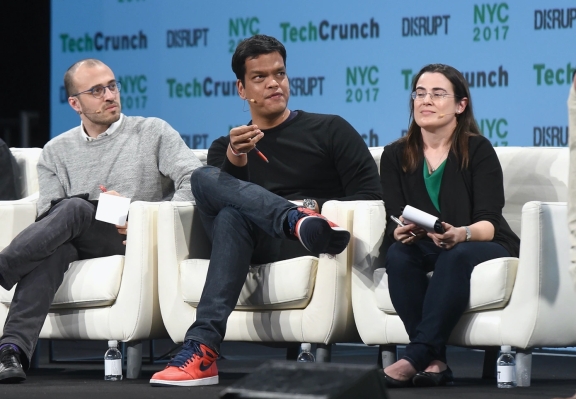Web3 has plenty of money going for it — well, yes quite a bit less than a few months ago — but it’s still hard to argue that mainstream consumers have lined up to embrace web3 internet services. There have been some flash-in-the-pan hits so far, but investors are still searching for consumer use cases that make the most of blockchains, tokens and NFTs, beyond just trading them.
Andreessen Horowitz (a16z) GP Sriram Krishnan believes the incentive structures of web3 makes the space a natural fit for social networking, he told us on the latest episode of TechCrunch’s crypto podcast Chain Reaction. Krishnan has ample experience at Web 2.0 social networking companies; he’s served as an executive at Twitter, Facebook and Snap before joining a16z, which notably just debuted its latest $4.5 billion crypto fund.
“People ask me, ‘What is the thing that you’re spending a lot of time on, that you’re really interested in?’” Krishnan says. “I think the intersection of social media and web3 is really fascinating.”
While web3 has yet to see a platform equivalent of Twitter or Facebook take off, Krishnan believes the structure of blockchain-based platforms provides some interesting incentives to bring creators into their networks, which could in turn bring along their audiences. He notes that some of the most popular existing social media services have indexed on the sell of providing content creators a platform with reach, but one that doesn’t necessarily give them the financial upside of the network itself — something he think NFTs and tokens could rectify.
“With web3 … people who contribute value to the platform now have a share of the economics happening in the platform itself,” Krishnan says. “In some of web3 social media you actually could have the spiritual equivalent of a place on the cap table.”
The Winklevoss twins rock on
Beyond tokens and other crypto assets, Kirshnan alluded to mechanisms like decentralized autonomous organizations (DAOs) that allow stakeholders in a platform or protocol to make decisions about how that project matures, something he notes as pretty foreign to existing ideas of how Big Tech companies interact with their most popular content creators.
“[With web3], you now have a say in the governance of said platform too, which is really really interesting. It opens up a whole new toolbox and new power dynamic between creators and the social media platforms,” Krishnan says.
Krishnan says that the open natures of protocols operating in web3 means that clients will be more beholden to the interests of their users, because users could more easily take their assets and content to a new platform if they feel their interests aren’t being represented — something that sort of reframes the idea of exporting data from social media services.
“That ‘right of exit,’ that right of building alternate clients is one of the web3 social things I find really exciting,” he notes.
Web3 social is fairly theoretical at the moment, and while a few startups have tried to make a splash, the onboarding woes for users getting wallets, buying tokens and joining a platform are still much more challenging than the experiences on more streamlined sites like Twitter. Investors hope that some of these issues are just growing pains that developers will build past, developers that VCs like Krishnan are hoping they can bankroll.
Amid crypto market turmoil, Andreessen Horowitz announces $4.5 billion web3 fund
Subscribe to Chain Reaction on Apple, Spotify or your alternative podcast platform of choice to keep up with us every week.

